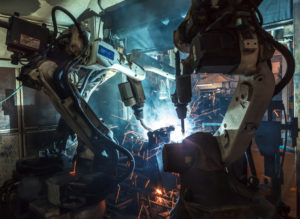
Remember when the California Manufacturing Sales Tax Exemption first came into fruition, on July 1, 2014? It seems like so long ago. But maybe it’s a good time to remind companies about this useful partial exemption available to manufacturing companies.
What exactly is this exemption?
It allows certain manufacturers and biotech companies to exempt a portion of California sales and use tax on purchases of qualified equipment used in manufacturing and R&D (research and development).
This exemption went into effect July 1, 2014 and applies to any sale, purchase, and lease of qualified tangible personal property on or after this date. The exemption was formerly set to sunset on July 1, 2022. However, the Governor of California recently signed Assembly Bill (A.B.) 398, which extends the exemption for manufacturing and research and development equipment to July 1, 2030. The bill has also expanded the exemption to include additional companies (see below).
The partial exemption rate is currently 3.9375% and applies to sales of qualifying property sold to a qualified person. In classic CA confusion that means that the purchaser still pays a portion of the state sales tax rate, plus applicable district taxes. For example, if the total tax rate would be 9.5%, a qualified taxpayer would pay a net sales tax rate of 5.5625% on the purchase.
Who qualifies for this exemption?
Purchasers are eligible for this exemption if:
- The company engages in certain types of businesses, also known as a “qualified person.” The company needs to have a specific NAICS code: 311100 to 339999 (manufacturing), 541711 (R&D in biotech), or 541712 (R&D, other), or (new with A.B. 398, 22111 to 221118, inclusive and 221122);
- the equipment purchased needs to be “qualified property;”
- the purchased equipment needs to be used at least 50% in the process of manufacturing or R&D.
- A.B. 398 expanded the exemption to include a contractor (and a qualified person) purchasing qualified equipment used as an integrated part of generation/production or storage/distribution of electric power.
For this exemption to apply, once the purchaser meets all of the qualifications, the seller accepts a completed exemption certificate.
Write it down!
On the surface, this exemption seems straightforward. But as always related to exemptions, it is important to write down all applicable information so that proper documentation is readily available in case of a future audit.
- The Company may be audited several years from now. If proper documentation is not available to show the proper qualifications of the equipment, the company may lose the benefit.
- Make sure that you have documented when the piece of equipment was in use and its duration. It is also important to document how the piece of equipment was used.
Am I able to go back and claim a refund?
If a company purchased qualifying property at the full tax rate, but thinks that they might have qualified for the exemption, there is hope! You can go back and claim a refund.
For example, if your company purchased machinery and paid tax at the rate of 7.50% and your purchase qualifies for the partial exemption, then the applicable tax rate for the transaction is net 3.5625% (7.5% minus the exempt amount of 3.9375%). A refund may generally be claimed at any time within the statute of limitations (generally, within three years). If you are seeking a refund for overpaid taxes on qualifying purchases of manufacturing or R&D equipment, the procedures are different depending on whether the original purchase was subject to sales tax versus use tax.
- If the tax you paid was use tax (typically use tax applies when you purchase from an out-of-state vendor), you may file a claim for refund directly with the California Department of Tax and Fee Administration (“CDTFA”, formerly Board of Equalization). Complete form BOE-101, Claim for Refund and Credit and mail it to the address provided on the form. Include as the reason for the refund that the property purchased qualifies for the manufacturing and research and development partial sales and use tax exemption.
- If the tax you paid was sales tax, you must request a refund from the retailer. The retailer would then file a claim for refund with the CDTFA. As the purchaser, you will need to provide the retailer with a completed partial exemption certificate (BOE-230-M) and documentary evidence that the original purchase should have qualified for the partial exemption.
If you think your company may qualify for this exemption (either currently or retroactively), and you have questions as you are navigating the nuances of this exemption, give us a call. We are here to help clients navigate the paperwork and make sure that qualifying companies get the exemptions they deserve! As always, we strive to give companies peace of mind as they continue their business operations.



















